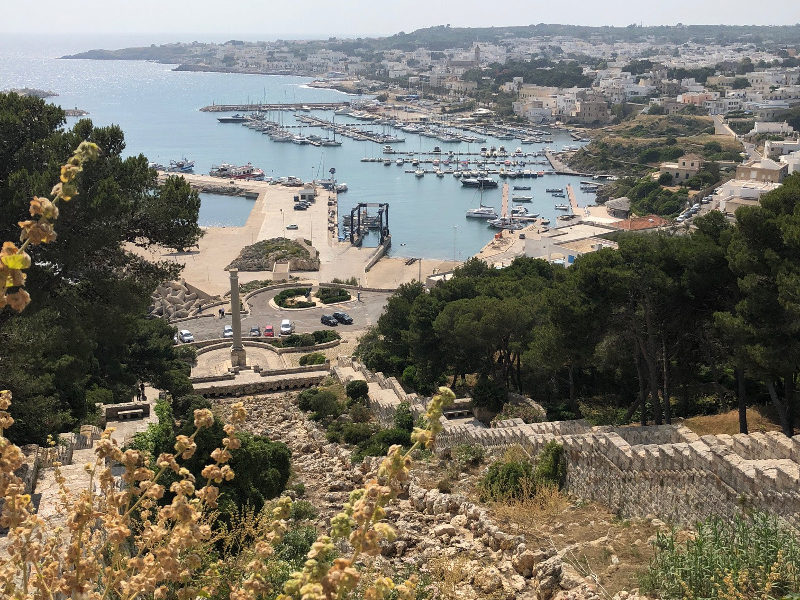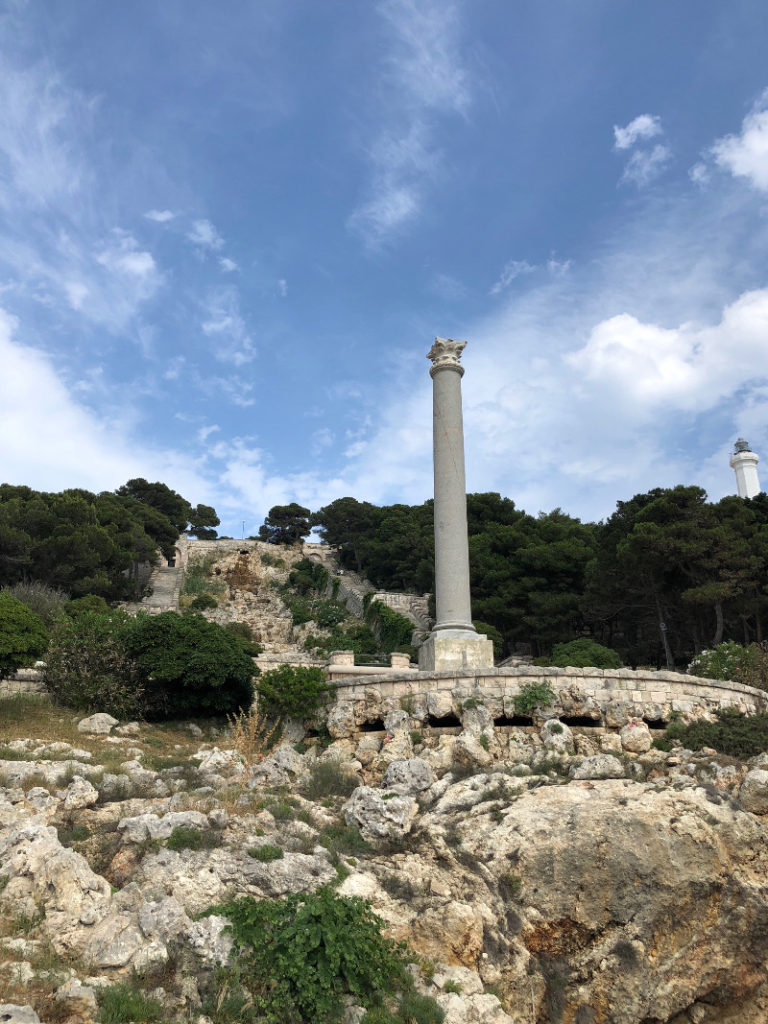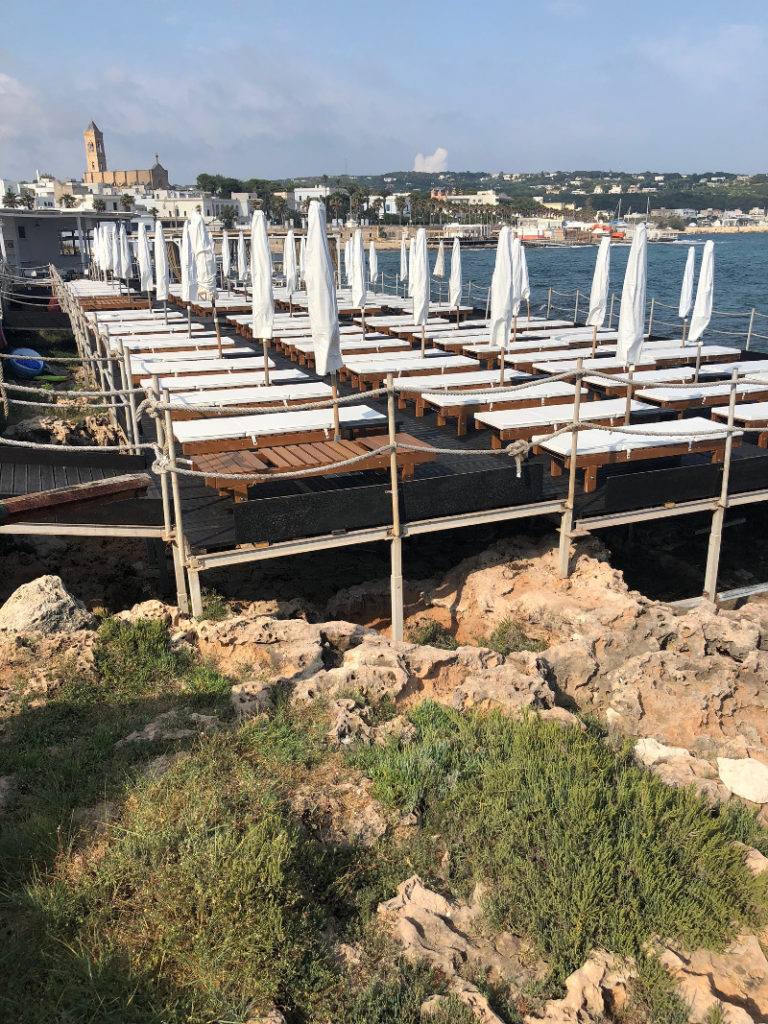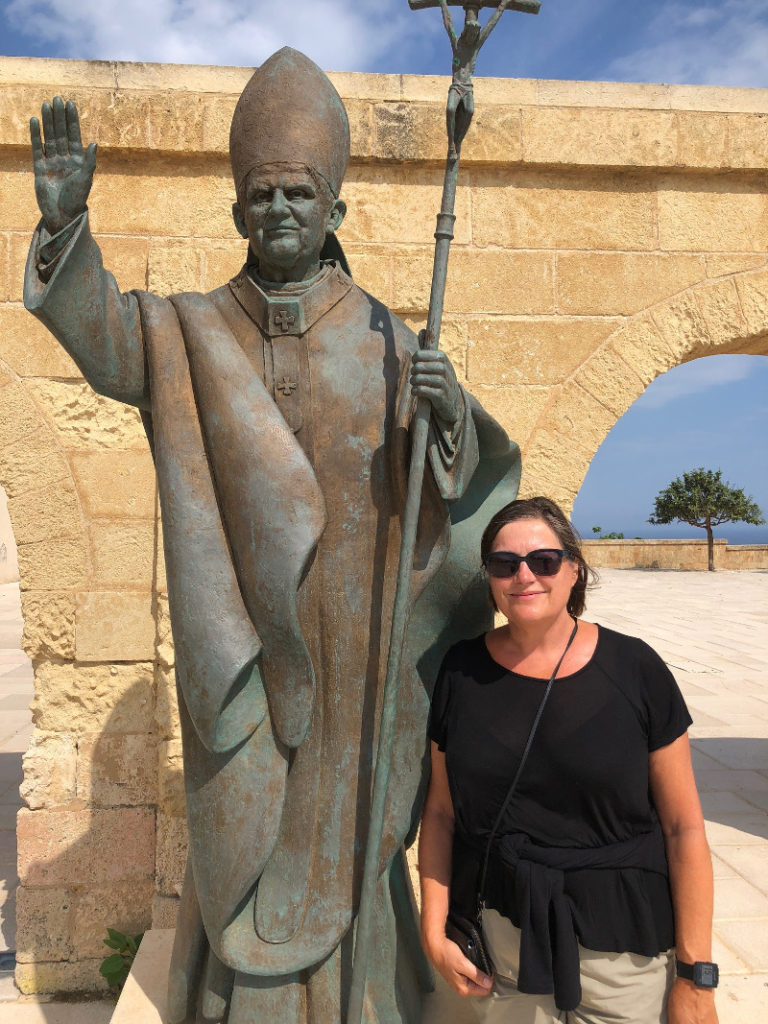Italy´s worst harbour: Santa Maria Di Leuca

39° 47′ 45.7368” N 18° 21′ 40.8276” E
May 13th
Finally, we have reached the end of the country. Even the ancient Romans called Santa Maria di Leuca for “The Finibus Terrae”, which means the end of the country. We have reached the outermost part of the heel of the Italian boot, where further sailing to the east will inevitably bring you to either Greece or Albania. We choose – in the first place – Greece.
The port of Santa Maria di Leuca is lousy. It’s the most troubled harbour we’ve ever been in. Powerful moles are built, but apparently the authorities have forgotten to consult an engineer, because any wave of the ionic ocean propagates to a turmoil inside the harbour basin. Ronja jumps and dances. It pulls violently in the clamps, it rattles in wires and ropes and closets, and we are close to falling out of the bunk. Damned harbor. And the harbour office is completely unwilling to let us switch to one of the more quiet places in the basin – “they are reserved for big boats”, they let us know. And we do not see any big boats at all in the days, while we are waiting for better weather that can bring us out of Marina di Leuca and on to Greece. A completed lousy harbour. Zero stars out of five.

Mussolini insisted, that the greatest akvaduct of Europe should end in a waterfall, a monument and a 300 steps staircase, to welcome foreigners to Italy. A few times a year they still let out water from the top
That said, the city in itself is quite interesting. We see one of Mussolini’s prestigious projects, an aqueduct that ends in a waterfall and a 300-step staircase, as a kind of respect-giving portal to Italy. We see dozens of classical villas that make one think, that this could have been where the Roman senators in the times of Caesar went out for their summer holiday, but of course it is not, while these mansions probably have only three hundred years of history behind them. We inadvertently attend an Italian funeral. And we see a large number of peculiar installations along the coast, where busy businessmen have compensated for the missing beaches by building metal stands on top of the coastal lava cliffs and then coating the metal frames with wooden boards. And on these now there are several hundreds of sunbeds and umbrellas waiting for sunseeking tourists from northern Italy. Wooden beaches.

What to do if you do not have sandy beaches but “only” lava-cliffs? You build a wooden beach to support sunbeds and parasols

After visiting Santa Maria di Leuca in 2008 a statue of the pope was created. The pope is at the left